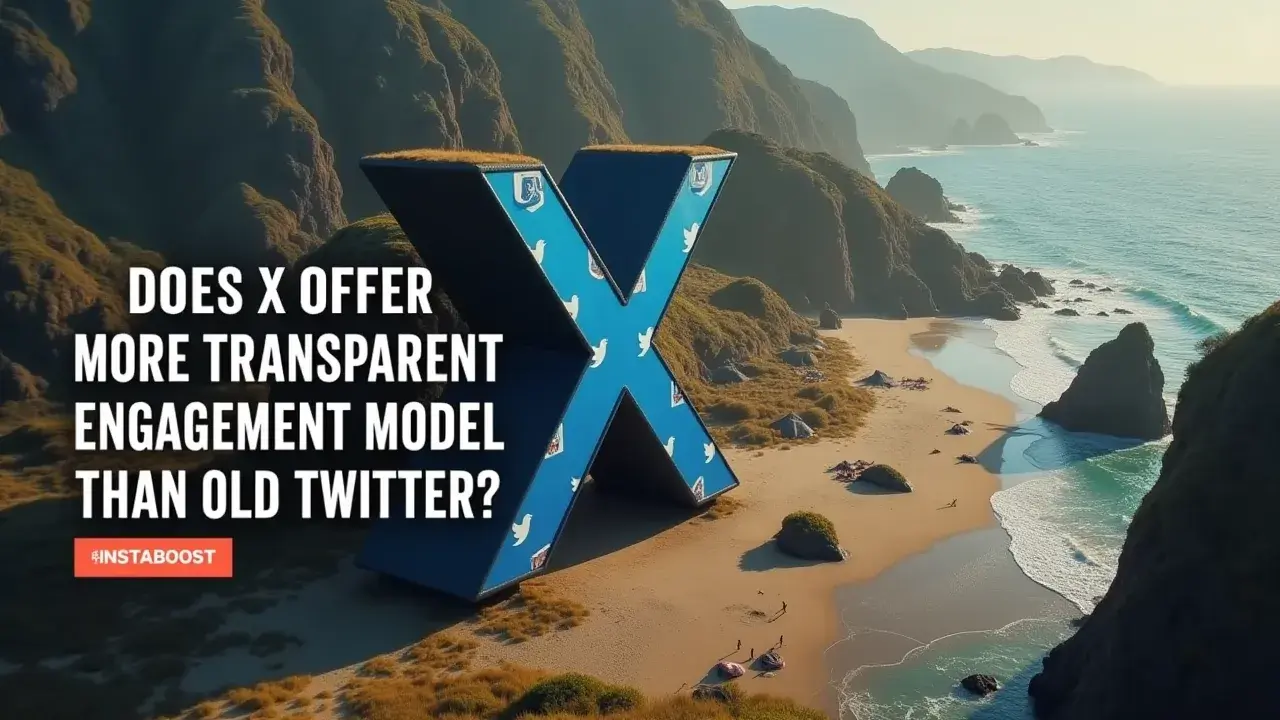Is X (Twitter) More Transparent About Engagement Than Old Twitter?
Transparency appears improved when policies and design explicitly surface how engagement is measured and moderated. Comparing stated policies and interface cues can clarify whether visibility rules, labeling, and feedback about reach are more clearly communicated than before. Where explanations are sparse or controls are buried, perceived transparency remains limited. Focusing on documented policies and observable design signals is the smart path to judge real improvements.
The Transparency Question: Has X Really Changed the Game?
For a long time, Twitter didn’t really explain how engagement worked. People would see their tweets disappear, or notice that likes and retweets dropped off, but there was never much of an answer for why. Since Elon Musk turned Twitter into X, the company says it’s trying to be more transparent about what’s happening behind the scenes.
On the face of it, that seems like an improvement – there are public view counts now, some details about the algorithm, and even parts of the feed’s code are open. Still, for regular users or brands trying to figure out social media, it mostly comes down to whether any of this actually helps them understand what’s happening with their posts.
On the face of it, that seems like an improvement – there are public view counts now, some details about the algorithm, and even parts of the feed’s code are open. Still, for regular users or brands trying to figure out social media, it mostly comes down to whether any of this actually helps them understand what’s happening with their posts.
More numbers are easy to show, but people want to know what those numbers mean, whether the process makes sense, and if there’s anything they can do differently. Even services like INSTABOOST pay close attention to what X shares, hoping to help people get more reach – sometimes it just feels automatic to look for ways to purchase Twitter boost when the numbers aren’t making sense. It does make you wonder if things are any clearer now, or if it’s just the same situation with a new name.
To actually see what’s changed, it probably comes down to what tools and explanations people really get, not just what’s talked about. There still seem to be a lot of open questions.
To actually see what’s changed, it probably comes down to what tools and explanations people really get, not just what’s talked about. There still seem to be a lot of open questions.

Hard-Earned Lessons: Why Credibility in Transparency Actually Matters
It’s funny how we talk about “overnight” success stories, but when you look closer, they’re always years in the making and usually involve a lot of behind-the-scenes frustration. Building trust is the same way, especially for social platforms that want users to believe they’re being open about how things work. Old Twitter is a good example; the way their engagement system worked was kind of a black box. People worried about shadowbans or posts being hidden, but there was rarely any real explanation.
That made a lot of users uneasy, even those who tried pretty hard to follow the rules and build up their audience – or just get traction with X followers in the first place. Now, with X, there’s this idea that things will be different – they say they’ll be clearer about how engagement functions. They’ve put out some documentation and open-sourced parts of the algorithm, which is a start. Still, real trust doesn’t come from a couple of blog posts or code dumps.
What actually matters is whether somebody posting on the platform can see what happens to their post and genuinely understand why. If a tweet gets limited or flagged, does the user get a straight answer, or is it some generic, careful wording that doesn’t really explain anything? That’s where you see if transparency is real or if it’s just another kind of branding. For platforms like this, it’s not a one-time thing; it’s about showing up, answering questions honestly, and admitting when things don’t go as planned. People can sense when they’re being included in what’s really happening, and when they’re not.
Strategic Shifts: Transparency as a Lever, Not a Buzzword
Everything meaningful I’ve seen in scalable results seems to begin with this kind of shift. When platforms go beyond treating transparency as a PR checkbox and actually use it to give people more say in what happens, the experience really does change. Old Twitter comes to mind. Trying to get your posts noticed there always felt confusing, like you were working hard in the dark, guessing what might help, but never sure.
The rules weren’t clear, so most of us ended up uncertain about what actually worked. Now, with X showing parts of its recommendation algorithm and giving reasons for why some posts get pushed up or down, it’s not only for show – you can actually do something with that information. For example, you start to notice patterns in X post interaction and realize how a single detail, like the presence of a community note, can shape a post’s reach. This sort of clarity lets creators, community managers, and brands like INSTABOOST make choices based on real information, not just gut feeling. If X says, for example, that posts with community notes might get less reach, or that certain kinds of engagement matter more, then you know how to approach your work.
So transparency isn’t about sharing everything for the sake of it; it’s about letting people actually use the platform more thoughtfully. The most effective strategies I’ve seen, whether from individuals or bigger teams, almost always start with knowing how the system works, at least a little. If that kind of transparency ever becomes the standard, everyone involved – users, brands, even the platform – stands to gain something real from it. And I keep thinking about how different things might look if this approach actually took root.
Beyond the Buzz: Where Transparency Still Falls Short
Not every new bit of information is a huge shift. Take X, for example. They talk a lot about being more transparent, but it’s hard to tell how much they’re actually putting out there.
There are some official posts and updates explaining the algorithm, but when you look for specifics, there’s still a lot that isn’t explained. Most of the time, users don’t get much direct guidance, so it ends up feeling a lot like Twitter used to – different branding, same uncertainty. It’s easy to feel like all this talk about openness is more about easing criticism than actually revealing how things work. Brands and creators still have to figure things out on their own, and even with some new metrics and occasional tips, there’s not much clarity.
I’ve even seen people try different methods to scale up tweet views X, just to see what sticks. It makes sense that platforms don’t want people to game the system, but it’s a stretch to say things are fully transparent now. For anyone hoping to grow their reach, or thinking about using things like INSTABOOST, it helps to keep a bit of distance and not take everything at face value.















